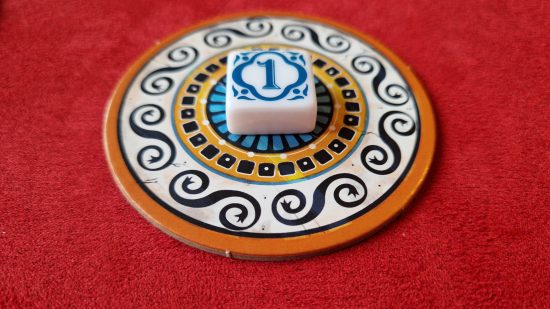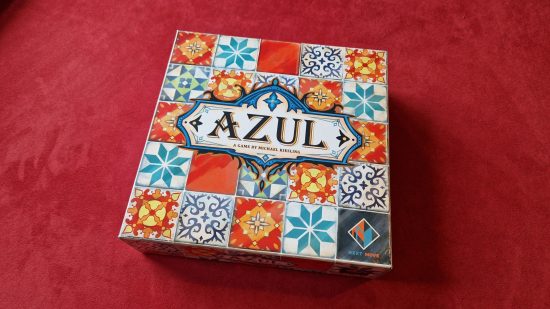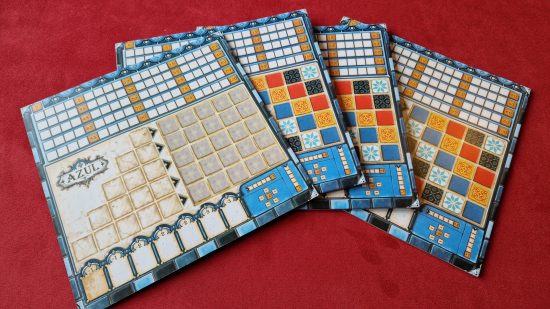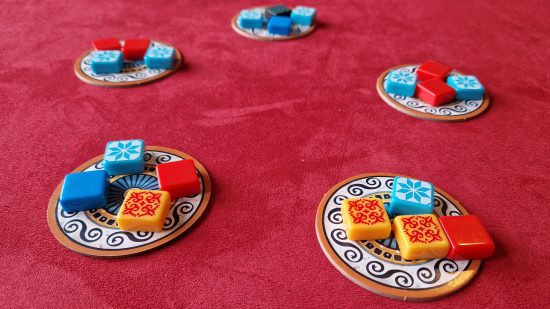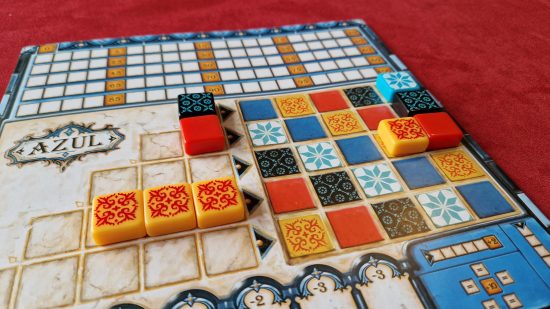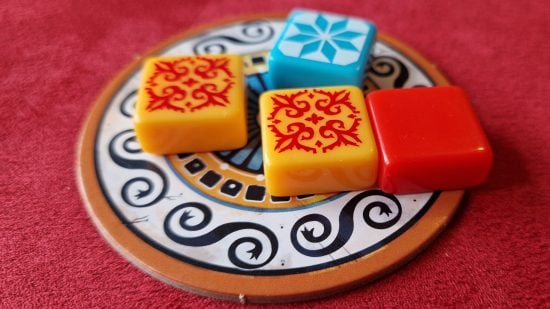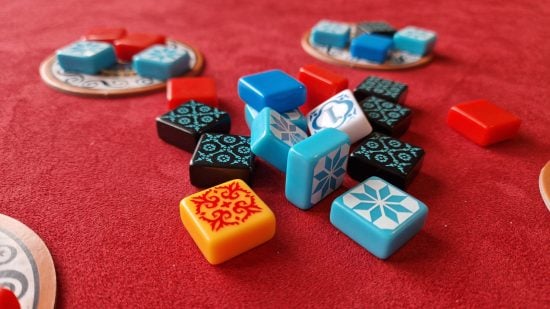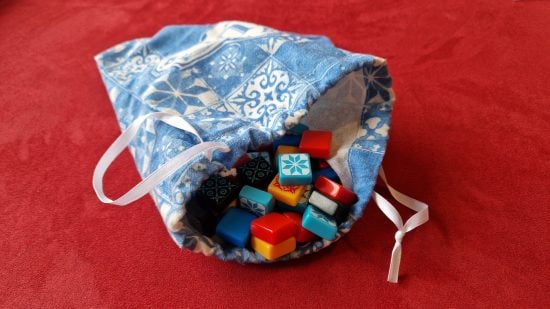Our Verdict
Azul is an ingenious, top-tier tile placement board game that marries pacy, cut-throat drafting gameplay to one of the most stylish physical designs we've seen on a tabletop. But don't let your eyes deceive you: strategy, not tranquility, is the name of the game.
These days, Azul is something of a household name among modern board game fans – as well known as Pandemic, and more than a match for older tile board games like Carcassonne. It’s not a difficult sell: Azul is simple to learn, quick to play, relatively cheap, pleasingly compact, extraordinarily pleasing to the eye – and a viciously competitive experience once you’ve learned the ropes. That said, no game is perfect for everyone, so our Azul board game review should help you decide whether to add it to your shelf in 2023.
If you’ve not had your eye caught by Azul’s colourful box art before (and haven’t spotted it in our guide to the all-time best board games), then allow us to explain the premise. You and your fellow players take on the roles of rival decorators, specialising in filling walls with the world’s most magnificent patterns of coloured tiles. Each of you is competing for the job of a lifetime – decorating the palace of Portuguese King Manuel I – by creating the best possible design on your own personal display wall.
The catch? You’re all working from the same limited supply of tiles, meaning you’ll need to watch your rivals closely, think fast, and plan ahead to get all the right tiles in all the right places, produce the best display, and claim victory.
Each player’s personal board has two sides: on the left, you’ll collect tiles of the same colour in rows, varying from one to five tiles long. On the right is your wall, where you’ll place tiles to create the scoring patterns that’ll win or lose you the game.
Each round, a handful of different coloured tiles are doled out randomly from a bag onto a circle of pretty cardboard dishes; then it’s drafting time – players take turns to claim all the tiles of a single colour from one dish, and place them on one of the rows on their own board. All the other tiles from each dish are added to a pile in the middle, until all the dishes are empty, and players have to start nabbing colours from this selection of rejects, till they’re all gone.
If you fill a row with one colour, you’ll permanently place a tile from that row onto the matching-coloured space on the wall directly to the right, aiming to form growing rows and clusters of tiles on your wall that’ll earn you points at the end of each round. The longer the vertical and horizontal rows you’re adding to with each tile, the more points you’ll add to your tally.
Create certain special patterns, or fill every wall space of a given colour, and you’ll earn a nifty bonus. As soon as someone fills a complete horizontal row in their wall, that’s the final turn, and the player with the most points wins. Easy, right? Not quite.
You see, the real action of the game happens not in the artistic placing of tiles on your wall, but in the drafting. Since every player can see every other player’s board, as well as the colours they’re picking, the game quickly becomes as much about stealing the tiles your opponents need as it is about chasing your own desired colours. Palace-decorating, you’ll soon find, is a brutal business.
Sure, it’d be great to grab those two reds, fill your five-row and nab a few points – but, if you take the three blues instead, you may not get points this round, but, by jingo, you’ll bloody well stop Sarah from getting that tasty bonus she’s been eyeing up for three turns. Take that, Sarah.
These choices are made tougher by the fact that, should you pick up tiles that you can’t place in your own board, they’re wasted, and detract from your overall score. As often as not, picking up those three blues to screw over Sarah will be a costly choice for you as well – one you’ll need to weigh up carefully before pulling the trigger.
But that’s the true joy of Azul: beneath its beautiful, light-hearted exterior lurks a deeply competitive race, driven by hard-nosed calculation and forward-thinking strategy, that plays a little differently every time depending on who’s playing and how the tiles fall.
While your eyes enjoy the pretty colours, your mind is juggling a constantly shifting balance of priorities, always contending with the random chance of drawing tiles from a bag. Imagine playing a version of Scrabble that forces you to compete for the letters you need, and you’re halfway there.
For some folks, this experiential bait-and-switch might be a bit dispiriting. The hasty gamer could be forgiven for picking up Azul looking for a cosy, creative, artistic experience that’s primarily about choosing tiles and creating something beautiful – and, while you can play the game with that in mind, you’re likely to get disappointed with it pretty quickly. Azul isn’t really about making pretty patterns at all, and – beyond maybe the first couple of experimental games – it’s not a very relaxing way to spend a half-hour, either.
It is, however, one of the best board games – and especially one of the best cheap board games and couples board games – ever made, combining a very clever, fast-moving drafting strategy game with uniquely satisfying aesthetics to create an experience you’ll keep coming back to – and which easily deserves a place on every collector’s shelf.
There’s a reason Azul has sold like crazy ever since it was first released by publisher Plan B games in 2017, and spawned three sequels: Azul: Stained Glass of Cintra in 2018; Azul: Summer Pavilion in 2019; and Azul: Queen’s Garden in 2022 (not to mention the original’s Crystal Mosaic expansion, and Summer Pavilion’s Glazed Pavilion expansion).
If you’re into Azul, there’s a lot more of it to try – and, if you haven’t played it yet, Wargamer can heartily recommend you give it a go in 2023.
